Corneal Graft Instruments
(The following instruments are designed for corneal grafts.
Knife, suture and forceps are not shown here.)
|
|
 
2 different types of scleral support rings (the one on
the right shows rings of different sizes).
The support ring is sutured to the sclera before the
beginning of the corneal graft. It helps to prevent the collapse of the
globe and thus prolapse the ocular contents or distort the corneal rim.
The ring is secured to the sclera anterior to the rectus insertion with
at least four scleral sutures. |
|
 
Corneal markers. The marker is used to mark the centre
of the cornea as an aid to centre the trephine. After marking the cornea,
check with the callipers to make sure that the marking is equidistant from
the superior and inferior limbus. |
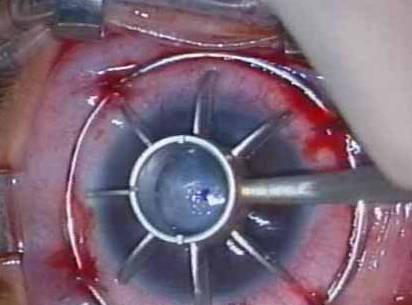
Picture showing the use of scleral support ring and corneal
marker. (Note: The marker shown here is different from
the one above.) |
|
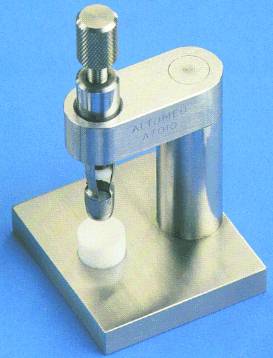 |
Corneal punch with block.
The donor cornea is placed in the block with the endothelial
side up. The punch (containing sharp blade) is pushed down vertically and
firmly from the endothelial surface. After punching, the endothelial surface
of the cornea is protected from drying by spreading layer of fluid or viscoelastic
on it. |
|
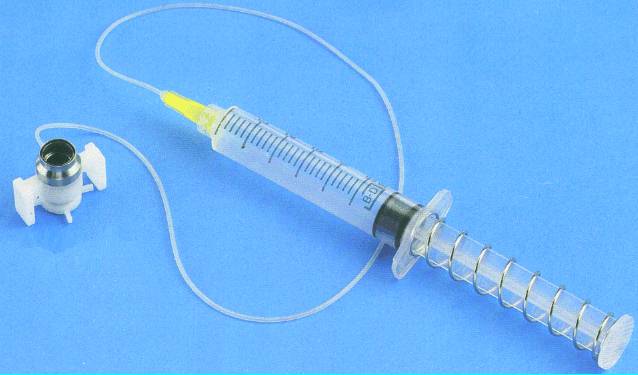
Hessburg-Barron vacuum trephine |
 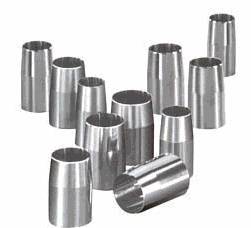
Hand-held trephines. The pictures on the right show
a trephine and its handle.
The pictures (trephines placed vertically) on the
left show trephines of various sizes. |
The above trephines are used to cut the donor cornea.
After checking the centration, the cornea can be cut
with either a semi-automated suction trephine or a hand-held trephine.
The anterior chamber is entered when aqueous came out around or within
the trephine ring.
(Note: Trephine is used only if the cornea is firm.
Trephine is not suitable in the presence of corneal perforation. In such
cases, free hand cutting of the marked cornea is recommended.) |
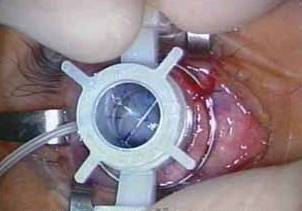
Picture showing a vacuum trephine being used. Note
the presence of cross hair within the trephine which
aids
centration. |
|
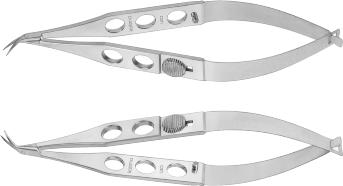
Corneal scissors (right and left)
After the anterior chamber is entered. The corneal button
can be removed by cutting with either a diamond blade or a pair of corneal
scissors. |
|
|
|